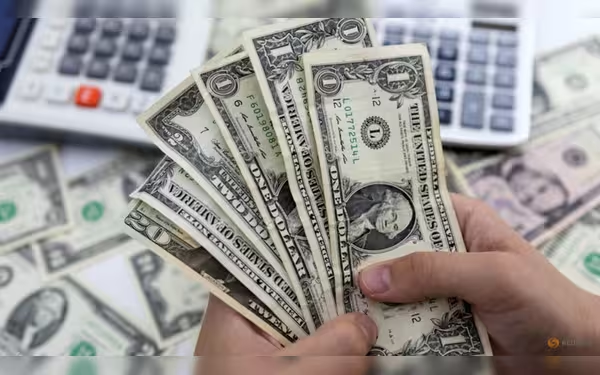Saturday, November 16, 2024 05:52 PM
Federal Reserve Cuts Rates, Dollar Strengthens Amid Economic Optimism
- Federal Reserve cuts interest rates by 50 basis points.
- Dollar index rises slightly after initial dip.
- Market anticipates further rate cuts this year.
 Image Credits: channelnewsasia
Image Credits: channelnewsasiaThe Federal Reserve's 50 basis point rate cut boosts the dollar, reflecting economic optimism and expectations for further easing measures.
The recent decision by the Federal Reserve to cut interest rates by half a percentage point has stirred significant reactions in the financial markets. This move, aimed at fostering economic growth, reflects the Fed's confidence that inflation will continue to decline towards its target of 2 percent annually. The new overnight rate now stands in the range of 4.75 percent to 5.00 percent, with expectations of further cuts in the coming years.
Initially, the dollar experienced a dip following the announcement. However, it quickly regained some ground after Federal Reserve Chair Jerome Powell's press conference. The dollar index, which measures the value of the dollar against a basket of other currencies, was last seen at 100.970, marking a slight increase of 0.05 percent on the day. This recovery came after the dollar had reached its lowest point since July 2023, at 100.21.
In the wake of the Fed's announcement, the euro saw a minor decline, dropping 0.01 percent to $1.111275, while the dollar remained stable against the Japanese yen at 142.370. Vassili Serebriakov, a strategist at UBS, commented on the situation, stating, "It's a more dovish cut. It certainly wasn't a hawkish cut." He further explained that a 50-basis point cut is generally seen as negative for the dollar, contrasting it with a smaller cut that could have led to different market scenarios.
During the press conference, Powell expressed optimism about the economy, stating, "I don't see anything in the economy right now that suggests that the likelihood of a recession." He highlighted that growth remains solid, inflation is decreasing, and the labor market is robust. This positive outlook may have contributed to the market's relatively calm reaction to the Fed's decision.
Market analysts have noted that futures on the fed funds rate are now pricing in approximately 70 basis points of additional rate cuts for the remainder of the year. This indicates that investors are anticipating further easing measures from the Fed as it seeks to support the economy amid potential slowdowns.
Interestingly, the yield curve, which is a crucial indicator of economic expectations, reached its steepest level since July 2022 following the Fed's rate cut. This suggests that investors are adjusting their expectations for future economic performance. Meanwhile, the British pound emerged as the best-performing G10 currency of the year, rising 0.28 percent to $1.3200, while the Chinese yuan strengthened against the dollar, reaching 7.0780 per dollar in offshore trading.
As the financial landscape continues to evolve, it is essential for investors and consumers alike to stay informed about these developments. The Fed's actions not only influence currency values but also have broader implications for economic growth and stability. Understanding these dynamics can help individuals make more informed financial decisions in an ever-changing market.













